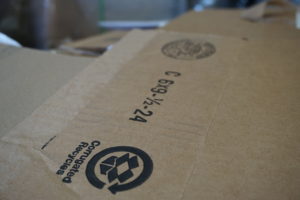Five years ago, the analytics firm comScore partnered with UPS to poll five thousand consumers on their online shopping habits. The results? In 2016, shoppers made 51% of their purchases online, compared to 48% in 2015, and 47% in 2014. The five-year study also found that an increased reliance and convenience of smartphones has bolstered the steady rise in online shopping.
That 51% of shoppers seems to have the right idea. Who wouldn’t take advantage of all the comforts online shopping has to offer? By shopping online, you easily avoid crowds and traffic, all while having your purchased items show up at your doorstep within two to three days of you clicking the “order” button.
But, with the rise of online shopping, brick and mortar stores have been left in the dust. Many department stores, once known as mighty corporations, have been suffering sharp declines in sales. In fact, the switch to online shopping has become so prominent, that huge department stores, such as Macy’s Kohl’s, JCPenny, and Sears, have needed to consistently shut down locations to stay afloat. Just this past holiday season, Macy’s announced that it was closing 68 of its stores as part of its two-year plan to close 100 store locations. That translates to 15% of the business shutting down. Sears did no better; it closed 17 stores in September 2016 alone, and 64 Kmarts in December, according to a recent Yahoo article. Yahoo also reported that JCPenny could be shutting down 300 of its stores within the next two years.
Even stores that are booming, such as Target, have seen a discrepancy in their online sales and in-store sales. This past holiday season, sales at Target locations fell 3% from November to December, as reported by MarketWatch. However, online sales grew a solid 30% during that same period.
What does the shift to online sales mean for the recycling industry?
These stores, along with many others, are producers of good quality OCC, or “old corrugated cardboard”. This material is widely recycled across the globe, with many recyclers and paper mills relying on a clean, consistent supply of this material. As these large retail establishments continue to shut down, they take the OCC down with them. This clean source of fibers is declining.
You may respond that these products, whether they are purchased at a store or from an online retailer, are still packed in cardboard boxes. They are, which is good for finished product demand. However, what does the average residential customer do with this quality cardboard fiber? Typically, they will place this material on the curb along with all their other recyclable material – this is what perpetuates the problem.
Single stream recycling, which is the process of “mixing” all grades of residential recycling, can create problems with regard to material contamination. Sorting these recyclables can be difficult, and often results in an end product that contains contamination. This results in the generation of lower grade recyclables, and material that can be prohibitive for problem-free mill consumption.
We all know online shopping isn’t going away any time soon. So, then what can be done to address this issue? As with most of the problems created with the growth of “single stream” recycling, consuming paper mills will have to adjust to the new product mix, and learn to deal with levels of contamination they have not had to address in the past. As the online shopping industry continues to boom and OCC levels continue to decline, the recycling industry must adjust to remain productive

